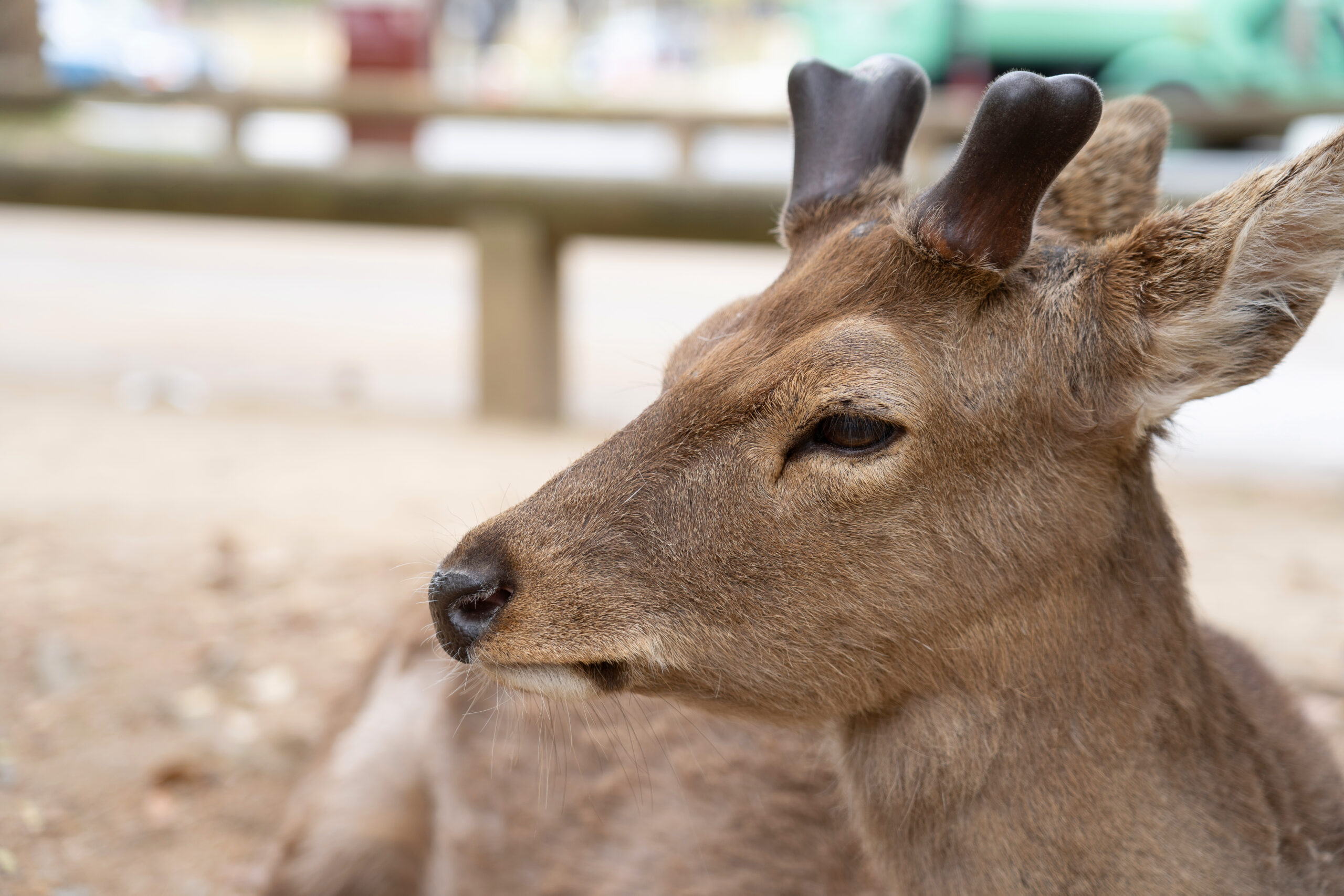Nara, a city steeped in history and cultural significance, is renowned for its beautiful temples, ancient architecture, and the free-roaming deer that inhabit its parks. These deer, considered sacred by many, symbolize the rich heritage and natural beauty of the region. Protecting these majestic creatures is crucial not only for preserving the city’s unique identity but also for maintaining ecological balance. This article explores the various aspects of Nara’s deer population, from their historical significance to contemporary conservation efforts.
Understanding Nara’s Cultural Heritage and Its Guardians
The city of Nara, once the capital of Japan, is home to an array of cultural treasures, including the UNESCO World Heritage Sites of Todai-ji, Kasuga-taisha, and the surrounding Nara Park. The deer that roam freely throughout these sites are viewed as messengers of the gods, embodying the spiritual connection between nature and humanity. Historically, the guardians of Nara have not only included the priests and local authorities but also the deer themselves, which have been protected by tradition for centuries.
Local legends speak of a divine connection between the deer and the people of Nara, where the animals are believed to possess supernatural powers. This deep-rooted reverence has placed the deer at the forefront of Nara’s cultural narrative, making them indispensable to the city’s identity. The guardianship of Nara is thus twofold: the community actively participates in preserving their cultural heritage while simultaneously advocating for the protection of the deer that symbolize it.
With the advent of modernization and increased tourism, the role of these guardians has expanded. Community organizations, local governments, and conservationists have come together to ensure that the sacred bond between the people and the deer endures. This collaborative effort underscores the importance of preserving not only the physical aspects of Nara’s heritage but also the intangible connections that define it.
The guardianship extends beyond mere protection; it involves education and engagement with visitors. By fostering understanding about the significance of the deer, locals hope to cultivate respect among tourists while promoting sustainable practices that coexist with nature. This multifaceted approach highlights the importance of cultural heritage, making Nara a living testament to the symbiotic relationship between humans and animals.
In essence, the guardians of Nara are those who recognize the intrinsic value of the deer within their cultural context. As stewards of this unique heritage, they continue to work diligently to ensure that Nara’s identity, enriched by the presence of these sacred creatures, remains intact for generations to come.
The intricate tapestry of Nara’s cultural heritage is woven with threads of history, spirituality, and ecological balance. Understanding this heritage is crucial for appreciating the significance of protecting its deer population, which serves as a living embodiment of the city’s past and future.
The Sacred Deer: Symbolism in Nara’s History
The deer in Nara are not mere animals; they are sacred creatures with deep-rooted significance in Japanese culture and spirituality. According to Shinto beliefs, these deer are seen as messengers of the gods, embodying the divine presence within nature. This belief has influenced the treatment of these animals for centuries, ensuring their safety and respect among the local populace.
In historical texts, such as "Nihon Shoki," the deer are often mentioned in relation to divine encounters and mythological tales. This historical narrative has shaped how the local community and visitors alike perceive these animals, transforming them into symbols of peace and tranquility. The deer serve as a reminder of the harmonious relationship that exists between humanity and nature, an ethos deeply embedded in Japan’s cultural identity.
Nara’s deer have become icons of the city’s cultural landscape, featured in art, folklore, and religious practices. Statues, paintings, and festivals often celebrate their significance, further embedding them into the collective consciousness of both locals and tourists. This symbolic representation has fostered a profound respect for the animals, which is essential for their ongoing protection.
The intertwining of the deer with Nara’s identity extends to various aspects of daily life, including local cuisine, handicrafts, and traditional performances. Each deer sighting is an opportunity for reflection on the city’s past and a celebration of its cultural richness. This unique relationship has transformed the deer into a living testament to Nara’s historical legacy, ensuring their place in the narrative of the city.
Moreover, the symbolism of the deer has broader implications for environmental stewardship. As sacred beings, their protection is viewed as a moral obligation, prompting discussions about conservation practices and sustainable tourism. This perspective reinforces the idea that safeguarding Nara’s deer is not merely an act of preservation but a commitment to honoring cultural and spiritual values.
In summary, the sacred deer of Nara are emblematic of the city’s rich historical narrative, serving as both a spiritual symbol and a critical link to cultural identity. Understanding their significance is vital for any conservation efforts aimed at ensuring their survival and the preservation of Nara’s unique heritage.
Nara Park: A Sanctuary for Deer and Visitors Alike
Nara Park, established in 1880, serves as a vital sanctuary for both deer and visiting tourists. Covering over 660 hectares, the park is home to approximately 1,500 free-roaming deer, allowing them to thrive in a natural environment that closely resembles their historical habitat. This expansive space not only provides a refuge for the deer but also allows visitors to encounter these sacred animals in a serene setting.
The park is renowned for its beautiful landscapes, which include lush greenery, ancient temples, and quaint walking paths. This picturesque environment enhances the experience for visitors, making it a popular destination for families, photographers, and nature enthusiasts. The presence of the deer adds a unique charm to the park, creating a living backdrop that reflects Nara’s cultural heritage.
In addition to being a sanctuary for deer, Nara Park plays a crucial role in educating visitors about the importance of wildlife conservation. Informational signage and guided tours provide insights into the historical and ecological significance of the deer, fostering a sense of responsibility among tourists. By raising awareness, the park encourages visitors to engage with the local culture while respecting the natural environment.
The deer within the park are accustomed to human interaction, contributing to a unique experience for visitors. Tourists can purchase special deer crackers, known as "shika senbei," to feed these gentle creatures, creating an interactive and memorable encounter. This practice not only attracts visitors but also strengthens the bond between humans and deer, reinforcing the cultural narrative surrounding these sacred animals.
However, the park also faces challenges in balancing the needs of the deer with the expectations of tourists. Overcrowding during peak seasons can lead to increased stress for the animals, prompting ongoing discussions about visitor management strategies. It is essential for park authorities to implement measures that protect the deer while still allowing for public enjoyment, ensuring a sustainable coexistence.
Overall, Nara Park stands as a vital sanctuary where the city’s cultural heritage and natural beauty converge. Its role in protecting both deer and providing a welcoming space for visitors highlights the importance of conservation and responsible tourism, ensuring that Nara remains a beloved destination for generations to come.
The Role of Deer in Nara’s Ecosystem and Biodiversity
The deer of Nara play a vital role in maintaining the local ecosystem and contributing to biodiversity within the region. As herbivores, they help control vegetation growth, which in turn shapes the landscape and promotes the health of various plant species. By grazing selectively, deer can prevent certain plants from overtaking the area, fostering a diverse range of flora.
This grazing behavior creates a mosaic of habitats that supports a variety of wildlife. The presence of deer benefits not only their population but also other species that share the same environment. Birds, insects, and small mammals thrive in areas where deer forage, as their activities create openings in the vegetation that allow sunlight to reach the forest floor.
Moreover, deer contribute to nutrient cycling within the ecosystem. Their droppings enrich the soil, promoting plant growth and enhancing the overall health of the habitat. This natural fertilization process supports a thriving ecosystem, highlighting the interconnectedness of all living beings within Nara Park and its surroundings.
Additionally, the deer serve as a crucial indicator species, reflecting the overall health of the ecosystem. Changes in their population or behavior can signal shifts in environmental conditions, prompting scientists and conservationists to monitor the ecosystem’s stability. This monitoring is essential for understanding the broader impacts of human activity, including urbanization and climate change.
The relationship between deer and their environment is complex and symbiotic. While they contribute positively to biodiversity, their presence also requires careful management to prevent overgrazing and ensure the sustainability of the ecosystem. This delicate balance is a focal point for conservation efforts, as maintaining the health of Nara’s natural habitats is essential for both the deer and the diverse life forms that depend on them.
In conclusion, the deer of Nara are integral to the region’s ecosystem, influencing plant life, supporting wildlife diversity, and providing valuable insights into environmental health. Understanding their ecological role is essential for effective conservation strategies that prioritize the well-being of both the deer and the natural landscapes they inhabit.
Conservation Efforts: Protecting Nara’s Deer Population
Conservation efforts to protect Nara’s deer population are multifaceted and involve collaboration between local authorities, conservation organizations, and the community. Understanding the significance of these sacred creatures, various initiatives have been put in place to ensure their well-being and sustainability. These efforts aim to strike a balance between human activity and wildlife conservation, recognizing that both can coexist harmoniously.
One major aspect of these conservation efforts is habitat preservation. Protecting the natural environment where the deer roam is crucial for their survival. This includes maintaining the integrity of Nara Park and surrounding areas, ensuring that the ecosystems remain healthy and resilient. Local governments are actively working on land-use policies that prioritize conservation and limit urban development encroaching on deer habitats.
Additionally, monitoring programs are in place to track the health and population dynamics of the deer. By conducting regular surveys and assessments, conservationists can gather essential data to inform management strategies. This scientific approach allows for adaptive management, ensuring that conservation measures are responsive to the changing needs of the deer population and their environment.
Education and community engagement are also key components of conservation efforts. Informing the public about the importance of protecting the deer and their habitats fosters a sense of responsibility and stewardship. Schools, community organizations, and visitor centers collaborate to deliver educational programs that emphasize the significance of wildlife conservation, encouraging local residents and tourists to actively participate in protection initiatives.
Moreover, addressing human-deer interactions is crucial for the success of conservation efforts. Overfeeding and improper behavior by tourists can lead to health issues for the deer and disrupt their natural behaviors. To mitigate these challenges, educational campaigns have been developed to guide visitors on appropriate practices when interacting with the deer, promoting respectful and responsible tourism.
In summary, the conservation efforts surrounding Nara’s deer population are comprehensive and involve a collaborative approach that prioritizes habitat preservation, monitoring, education, and responsible tourism. These initiatives are essential for ensuring the long-term survival of the deer and the ecological integrity of Nara, allowing future generations to appreciate the rich cultural and natural heritage of the city.
Local Communities and Their Relationship with the Deer
The relationship between local communities and the deer of Nara is a complex interplay of cultural reverence, economic interest, and ecological responsibility. For centuries, the people of Nara have coexisted with these sacred creatures, developing a unique bond that is reflected in various aspects of daily life. This connection is deeply embedded in the local culture, influencing practices, beliefs, and community engagement.
The deer are often regarded as part of the community, with residents viewing them as family members of sorts. This sentiment is evident in the way local festivals celebrate the deer, such as the famous "Shika Matsuri" or Deer Festival, where rituals and offerings are made to honor these sacred animals. Such traditions reinforce the importance of the deer in local culture and highlight the community’s commitment to their protection.
Moreover, economic activities are intrinsically linked to the presence of deer. The tourism industry in Nara heavily relies on the allure of these animals, attracting millions of visitors each year. Local businesses, such as souvenir shops, food vendors, and accommodations, benefit from deer-related tourism, making it a vital aspect of the local economy. This economic dependency further cements the relationship between the community and the deer, as residents are incentivized to protect their well-being.
However, this relationship is not without its challenges. As tourism increases, so does the pressure on the deer population and their habitats. The local community faces the delicate task of balancing economic development with the need for conservation. Engaging in sustainable tourism practices is essential, ensuring that the influx of visitors does not negatively impact the deer or their environment.
Community involvement in conservation efforts is crucial for fostering a sense of shared responsibility. Local organizations and initiatives encourage residents to participate in monitoring and protecting the deer, promoting awareness and education about their importance. By empowering the community to take an active role in conservation, a stronger connection to the deer is established, reinforcing the belief that their protection is a collective endeavor.
In conclusion, the relationship between local communities and Nara’s deer is characterized by cultural reverence, economic dependency, and ecological responsibility. This intricate bond highlights the need for sustainable practices that honor the sacred nature of these animals while ensuring the community’s continued prosperity. Strengthening this relationship is essential for the ongoing protection of both the deer and the cultural heritage they represent.
Challenges Facing Nara’s Deer: Urbanization and Tourism
As Nara continues to evolve, the challenges posed by urbanization and tourism threaten the delicate balance between the deer population and their natural habitat. Rapid urban development has encroached upon the areas surrounding Nara Park, leading to habitat loss and fragmentation. This encroachment disrupts the deer’s natural behaviors, including foraging and breeding, which can have dire consequences for their population.
Increased tourism, while economically beneficial, poses additional challenges for the deer. The influx of visitors can lead to overfeeding, which not only alters their natural diets but also creates dependency on human-provided food. This change in behavior can result in health issues for the deer, including digestive problems and increased aggression towards humans seeking to feed them.
Moreover, the sheer volume of tourists can contribute to stress for the deer, particularly during peak seasons. Overcrowding can lead to aggressive interactions, both among deer and between deer and humans, creating a challenging environment for these sacred animals. This stress can impact their overall health and well-being, further exacerbating the challenges they face.
Additionally, the threat of vehicle traffic in and around Nara Park poses a significant risk to the deer. As urban areas expand, roads and infrastructure developments create hazards for wildlife, leading to accidents and fatalities. It is essential for local authorities to implement wildlife corridors and other protective measures to ensure safe passage for the deer.
The impact of climate change is another looming challenge for Nara’s deer. As weather patterns shift, the availability of food and suitable habitats may be adversely affected. Droughts, heavy rains, and changing temperatures can alter the landscape and impact the ecosystems that support the deer population. Understanding these challenges is crucial for developing adaptive management strategies that can help mitigate their effects.
In summary, urbanization and tourism present significant challenges for Nara’s deer population. Addressing these issues requires a comprehensive approach that prioritizes habitat protection, responsible tourism, and community engagement. By recognizing the importance of conserving the deer and their environment, Nara can strive to ensure the survival of these sacred animals in the face of ongoing pressures.
Laws and Regulations Governing Deer Protection in Nara
Protection of Nara’s deer is enshrined in various laws and regulations that reflect the cultural significance of these animals as well as the necessity for their conservation. The Japanese government, along with local authorities, has implemented several measures to safeguard the deer population and ensure their well-being amid growing urbanization and tourism pressures.
The most notable piece of legislation is the "Wildlife Protection and Hunting Law," which provides a legal framework for the protection of deer and other wildlife across Japan. Under this law, it is illegal to harm or kill deer without proper authorization. This legal protection underscores the cultural and ecological importance of the deer in Nara, reinforcing the community’s responsibility to safeguard these sacred animals.
In addition to national regulations, local ordinances further delineate the specific protections afforded to Nara’s deer. For instance, Nara Prefecture has established guidelines that govern deer feeding practices and tourist interactions. These regulations aim to prevent overfeeding and ensure that visitors respect the natural behaviors of the deer, promoting a healthier relationship between humans and wildlife.
Moreover, the local government actively engages in monitoring and research efforts to assess the health of the deer population. Regular population surveys and health check-ups are conducted to gather data that inform management decisions. This scientific approach allows authorities to adapt regulations as necessary, ensuring that conservation measures remain effective in the face of changing environmental conditions.
Collaborative efforts with non-profit organizations and wildlife conservation groups also play a crucial role in enhancing legal protections for the deer. These organizations often advocate for stricter regulations, raise awareness about the challenges faced by the deer population, and provide educational resources to the community and tourists. Their involvement ensures that the voices of local residents and conservationists are heard in the policymaking process.
In summary, Nara’s deer are protected by a combination of national laws and local regulations that reflect their cultural significance and ecological importance. Ongoing monitoring and collaboration with conservation organizations further enhance these protections, demonstrating a commitment to preserving the deer population for future generations. These legal frameworks play a crucial role in ensuring that both the deer and their habitats are safeguarded, balancing the needs of wildlife with those of the local community and visitors.
Educational Programs: Raising Awareness for Deer Conservation
Educational programs play a pivotal role in raising awareness about the importance of conserving Nara’s deer population. These initiatives aim to inform both locals and visitors about the cultural significance of the deer, the challenges they face, and the necessary steps individuals can take to contribute to their protection. By promoting understanding and respect for these sacred creatures, educational efforts help foster a culture of conservation within the community.
Local schools often incorporate lessons about the deer into their curricula, emphasizing their role in Nara’s cultural heritage and ecosystem. Field trips to Nara Park provide students with a firsthand experience of interacting with the deer and learning about their behaviors. These educational experiences instill a sense of pride and responsibility among young residents, encouraging them to become stewards of their local environment.
Visitor centers within Nara Park also play a crucial role in education, offering informational displays, brochures, and guided tours that highlight the cultural and ecological significance of the deer. These resources help tourists understand the proper ways to interact with the deer, promoting respectful behavior that benefits both visitors and animals. By providing visitors with the necessary knowledge, these programs contribute to a more sustainable and enjoyable tourism experience.
In addition to traditional educational methods, digital initiatives have also gained traction in raising awareness for deer conservation. Social media campaigns, informative websites, and virtual tours allow a broader audience to engage with the topic, making conservation accessible to people of all ages and backgrounds. These online platforms serve as valuable resources for sharing success stories, conservation tips, and updates on local initiatives.
Collaboration with local organizations and conservation groups has further enhanced educational efforts. Workshops and community events bring together residents, tourists, and experts to discuss conservation strategies and explore ways to protect the deer and their habitats. By fostering dialogue and collaboration, these initiatives create a sense of community involvement and collective ownership over conservation efforts.
In conclusion, educational programs are essential for raising awareness about the protection of Nara’s deer population. By engaging with schools, visitors, and the wider community, these initiatives promote respect for wildlife and encourage sustainable practices. Through ongoing education, Nara can cultivate a culture of conservation that safeguards the future of its sacred deer and the rich heritage they represent.
The Economic Impact of Deer Tourism in Nara City
Deer tourism is a significant economic driver for Nara City, attracting millions of visitors to the region each year. The unique opportunity to interact with free-roaming deer in Nara Park not only enhances the visitor experience but also supports








